 Twas the day after Christmas and all through the house, everyone was sleeping except for me. The reality is that I’ve not blogged in two days because of a deadly combination of holiday festivities and a horrible case of bronchitis. So, this morning I’m sitting at my computer and cleaning out my email inbox looking for blog ideas. There are scraps of ideas everywhere I look, but nothing cohesive was coming together until I opened an email from Tom Ahern, who is one of the biggest and brightest names in the field of donor communications.
Twas the day after Christmas and all through the house, everyone was sleeping except for me. The reality is that I’ve not blogged in two days because of a deadly combination of holiday festivities and a horrible case of bronchitis. So, this morning I’m sitting at my computer and cleaning out my email inbox looking for blog ideas. There are scraps of ideas everywhere I look, but nothing cohesive was coming together until I opened an email from Tom Ahern, who is one of the biggest and brightest names in the field of donor communications.
Tom’s email newsletter was all over the road. It was speed dating for fundraising professionals.
The one topic that jumped off the page at me was something he termed “Donors Remorse.” Here is how he described it:
“But there is also a phenomenon let’s call ‘donor’s remorse.’ It’s just like buyer’s remorse: an oppressive feeling of disappointment and doubt that you’ve made a bad purchase decision. It’s a feeling of potential loss that happens immediately and automatically as soon as the first gift is completed. I’m feeling it right now. I just gave $500 of my hard-earned income to a political candidate whom I trust and admire. And yet I wonder….”
Have you ever felt donors remorse? I have, but I’ve never really processed it this way. So, reading Tom’s words got my brain engaged this morning (which kind of felt nice after days of existing in a fuzzy cold medicine state of being).
 I’m not sure about you, but every time I’ve experienced donors remorse, it has been because I made a contribution out of a sense of obligation. Here are a few examples:
I’m not sure about you, but every time I’ve experienced donors remorse, it has been because I made a contribution out of a sense of obligation. Here are a few examples:
- A friend asked me to make a donation to a charity because he serves on their board of directors
- A friend asked me to make a political contribution because they were running for office
- My neighbor’s son was selling stuff for his school’s fundraiser
The reason why donors remorse is a dangerous concept in fundraising circles is because it ties directly back to the idea of donor retention. When making a remorseful gift, the odds of the charity getting gift number two from me is extremely low. Since the non-profit organization most likely doesn’t know this (because they can’t read my mind), they are most likely about to embark on an expensive journey of trying to renew my support.
So, I’ve been thinking about ways to solve this problem this morning, and the answer surprised because it was remarkably simple.
Train your volunteers on how to use your case for support!
The reason why this work and does so every time is because it gets to the root of the problem.
In the three real-world examples I provided, the reason why I experienced donors remorse was because “The Ask” did not:
- paint a picture of need
- tell me how supporting the agency, school or cause would help address the need or make the world a better place
- inspire me
We need to stop asking our volunteers to go out into the world with a fistful of pledge cards to ask their friends to support their cause without appropriate training and support. It also needs to be more than just a quick training on how to use the organization’s case statement.
I can’t tell you how many times I’ve facilitated a campaign kickoff meeting and walked volunteers through the case for support only to find out they don’t use it. They fall back on the familiar fundraising pitch where they ask their friends to do them a solid favor by supporting their favorite charity.
Let’s treat our volunteers like the adults they actually are. Let’s take our trainings a step further by talking about:
- the concept of donors remorse
- the reasons why this happens
- the business costs associated with it happening
- how to avoid it
If volunteers knew they could help you avoid spending lots of donor renewal dollars in a wasted effort by simply making the ask in the right way, I think many more of them would do so.
I dunno . . . what do you think? Has the cold medication rotted my brain?
I love Tom Ahern, and I think you will, too. If you want to check out his free e-newsletter, please click here and have a look around Tom’s site.
Here’s to your health!
Erik Anderson
Founder & President, The Healthy Non-Profit LLC
www.thehealthynonprofit.com
erik@thehealthynonprofit.com
http://twitter.com/#!/eanderson847
http://www.facebook.com/eanderson847
http://www.linkedin.com/in/erikanderson847

 Several weeks ago, when I started this blog series, we discussed the idea of opening the lines of communication with donors through social media outlets. In this week’s post, I dive into chapter five of Lon Safko’s “
Several weeks ago, when I started this blog series, we discussed the idea of opening the lines of communication with donors through social media outlets. In this week’s post, I dive into chapter five of Lon Safko’s “ There are several benefits to engaging your donors in an on-line forum:
There are several benefits to engaging your donors in an on-line forum:
 Once someone plops on your home page what do they see? Is it mobile friendly? Can they easily navigate it?
Once someone plops on your home page what do they see? Is it mobile friendly? Can they easily navigate it? Does mobile friendly really matter?
Does mobile friendly really matter? I graduated from the University of Illinois Urbana-Champaign with my graduate degree in Urban Planning in 1994. In the summer immediately following graduation, I received my first fundraising appeal from the university. So, this story started almost 20 years ago, and it ended last night in an Applebee’s restaurant in Roswell, NM. In my opinion, there are lots and lots of little lessons throughout this story that every fundraiser should internalize.
I graduated from the University of Illinois Urbana-Champaign with my graduate degree in Urban Planning in 1994. In the summer immediately following graduation, I received my first fundraising appeal from the university. So, this story started almost 20 years ago, and it ended last night in an Applebee’s restaurant in Roswell, NM. In my opinion, there are lots and lots of little lessons throughout this story that every fundraiser should internalize. Almost 13 years later, The Chief danced his last dance at a football or basketball game.
Almost 13 years later, The Chief danced his last dance at a football or basketball game. I once heard a local Executive Director say that fundraising in a non-profit was like a new restaurant looking for investors by asking people to pay for forks. That’s exactly right! It’s illogical, yet it’s exactly right.
I once heard a local Executive Director say that fundraising in a non-profit was like a new restaurant looking for investors by asking people to pay for forks. That’s exactly right! It’s illogical, yet it’s exactly right. Donors and funding institutions absolutely and unequivocally have the right to support whatever they want in whatever method they choose.
Donors and funding institutions absolutely and unequivocally have the right to support whatever they want in whatever method they choose.
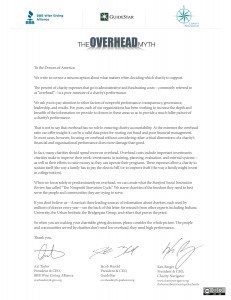
 As they say, the proof is in the pudding which is what inspired today’s blog post. The pudding, of course, is an article that washed into my email inbox from LinkedIn on November 30, 2013. The author was John Wasik and the article was titled “
As they say, the proof is in the pudding which is what inspired today’s blog post. The pudding, of course, is an article that washed into my email inbox from LinkedIn on November 30, 2013. The author was John Wasik and the article was titled “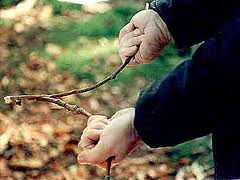 Wow! We have lots of money in our community.
Wow! We have lots of money in our community. Here is a recipe I suggest you consider when it comes to your prospect identification strategy:
Here is a recipe I suggest you consider when it comes to your prospect identification strategy: Oh heck . . . if you don’t want to follow this simple, sound and proven advice, then hire me. I am happy to be your water witch. Just give me a moment to run out back and pick a fresh Y-shaped stick off of my magic fundraising tree.
Oh heck . . . if you don’t want to follow this simple, sound and proven advice, then hire me. I am happy to be your water witch. Just give me a moment to run out back and pick a fresh Y-shaped stick off of my magic fundraising tree. I was having breakfast this week with a friend and fellow consultant and we were discussing resource development efforts, including events and grants. By now I’m sure you are well aware, I’m not a huge fan of organizations hosting multiple events. Events are expensive, labor intensive and don’t usually generate a lot of income.
I was having breakfast this week with a friend and fellow consultant and we were discussing resource development efforts, including events and grants. By now I’m sure you are well aware, I’m not a huge fan of organizations hosting multiple events. Events are expensive, labor intensive and don’t usually generate a lot of income.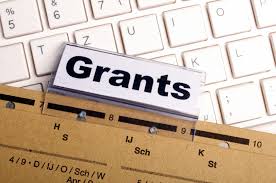 Grants, which are often 30% to 50% of an agency’s budget, more if they receive United Way funding, are one way. Yet, they too come with a cost. Most agencies get somewhere between 50% to 80% of the grants they submit. That means that the time spent on writing the 20% to 50% of the grants that don’t get funded is time lost. For the grants that are secured, there are reports to be written, dollars to be tracked, objectives to reach and programming to introduce. All of which is as it should be, and none of which is without cost.
Grants, which are often 30% to 50% of an agency’s budget, more if they receive United Way funding, are one way. Yet, they too come with a cost. Most agencies get somewhere between 50% to 80% of the grants they submit. That means that the time spent on writing the 20% to 50% of the grants that don’t get funded is time lost. For the grants that are secured, there are reports to be written, dollars to be tracked, objectives to reach and programming to introduce. All of which is as it should be, and none of which is without cost.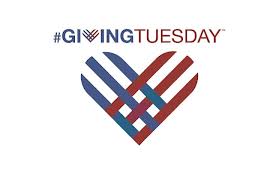 The turkey has been consumed (and so have the leftovers). Black Friday came and went with only a few bumps and bruises for Americans. Cyber Monday also came and went with consumer dollars flying all over the information super highway. Are you ready for one last hurdle? Today, is
The turkey has been consumed (and so have the leftovers). Black Friday came and went with only a few bumps and bruises for Americans. Cyber Monday also came and went with consumer dollars flying all over the information super highway. Are you ready for one last hurdle? Today, is 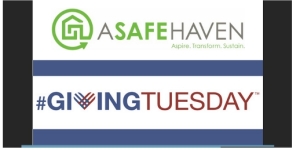
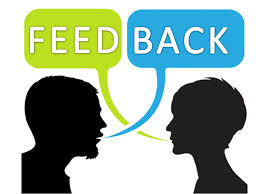 I read this and imagine my organization with engaged donors engaged in open communication, positive feedback, while building a better organization. Ahhhh, nirvana, but wait . . . did he say negative feedback, too?
I read this and imagine my organization with engaged donors engaged in open communication, positive feedback, while building a better organization. Ahhhh, nirvana, but wait . . . did he say negative feedback, too?